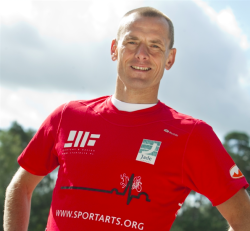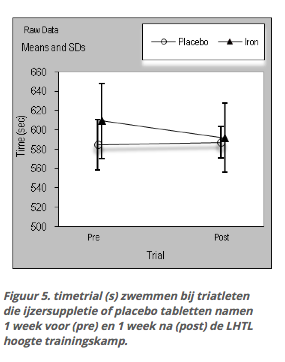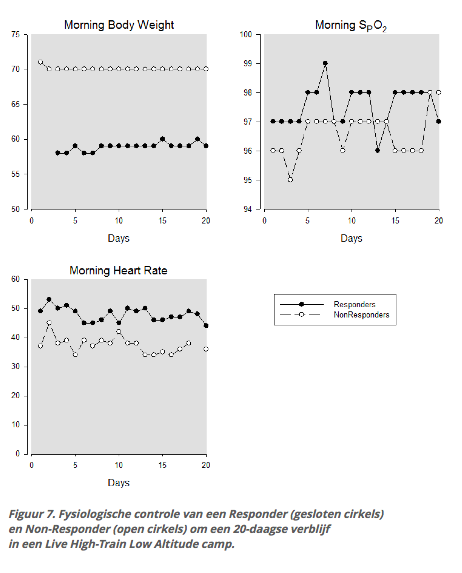
Guido Vroemen is a sports doctor and owner of the sports medical advice centre (SMA) in the middle of the Netherlands. Besides sports doctor, Guido is also Medical Biologist and certified Triathlon Trainer. We asked Guido how athletes can best prepare for a period of altitude training.
Altitude training places additional physiological stress on the body in an attempt to increase the athlete's response to training. However, there are a number of other factors in the lives of athletes that must be taken seriously when considering altitude training, including training, family, relationships, and psychological stress. Due to this additional stress, it is recommended that athletes reduce their training volume and intensity during the first few weeks of altitude training, but there are also a number of other training and health related factors that should be considered prior to altitude training. Increasing the stress of altitude training on an already less able athlete may actually result in decreased performance.
"Studies suggest that the hypoxic environment of altitude increases the demand for iron among well-trained athletes"
One of the most important considerations is iron status, because an adequate iron supply is necessary to develop new red blood cells. Iron supplementation in combination with elevation training has often been performed to improve performance in athletes, while in some studies elevation training without additional iron dose has also been applied, resulting in a marked decrease in serum ferritin (iron stores). Theoretically, iron is a required component of the hemoglobin molecule and serves as the exclusive site for binding and releasing oxygen. Iron is needed to build new red blood cells, which is part of the erythropoiesis. Ferritine, the storage form of iron, fell after a three-week stay at altitude at 2225 m in elite male swimmers. Similar results were reported in elite female skaters who stayed at 2,700 m for 27 days and trained at altitudes between 1,400 m and 300 m. These studies suggest that the hypoxic environment of elevation increases the demand for iron among well-trained athletes. In addition, recent studies have shown that endurance performance decreased due to iron supplementation in well-trained non-anemic athletes, which means that even athletes with good iron levels may be at a disadvantage if their iron level is not adequately supplemented for these individual conditions at height with a higher turn -over iron.
Research has shown that iron supplementation compared with placebo group during one Live High-Train Low stage of 3 weeks a significant improvement in performance (among swimmers and triathletes) in the iron supplementation group compared to the placebo group.
A low iron content will delay the adjustment to the altitude and thus the athlete's body will need longer to adapt to the low-oxygen environment and then also longer time to bring about performance improvement.
It has also been studied that supplemental iron tablets help to improve haematological parameters during IHE and IHT. After 2-3 weeks of both IHE, or IHT athletes taking iron supplements showed improved haematological indicators (Fig. 6).
Altitude can also adversely affect the immune system and delays recovery from illness, so that athletes with an illness are advised not to go to altitude.
The welfare of athletes at height must be closely monitored.
It is recommended that a number of blood parameters be monitored. These include a blood count (including red and white blood cells and reticulocytes), iron status (ferritin, transferrin) and EPO (if available).
In addition to monitoring changes in hematological and immune responses, there are other variables that need to be monitored including body weight, rest and heart rate during exercise and hemoglobin saturation levels (SpO2). This form of monitoring is less subjective and gives a good indication of the height adjustment.
For example, it can be observed that the non-responder generally has a lower haemoglobin saturation level (SpO2) than the responder. Such a change probably reflects the inadequate ability of the non-responder to adapt to the hypoxic environment.
Conclusion and advice:
There is sufficient evidence that the various methods of altitude training can be beneficial to improve performance, but to improve the performance of elite athletes at sea level it is advised to apply the Live High - Train Low principle. However, there are no guarantees that every athlete will improve by applying altitude training. Some athletes cannot handle the extra stress that hypoxia gives, especially if they are already able to perform on top of their.
"To improve the performance of elite athletes at sea level, it is advised to apply the Live High - Train Low principle."
Applying good monitoring through blood count monitoring with iron status and also various other parameters such as weight, stress, heart rate during exercise and SpO2 (oxygen saturation), ensures early detection of problems. Iron supplementation is important during altitude training. Questions remain about what is the most effective hypoxic dose, best monitoring of adaptation during hypoxia and how can we best distinguish non-responders from responders?
Guido Vroemen
Sports doctor, medical biologist and triathlon trainer



